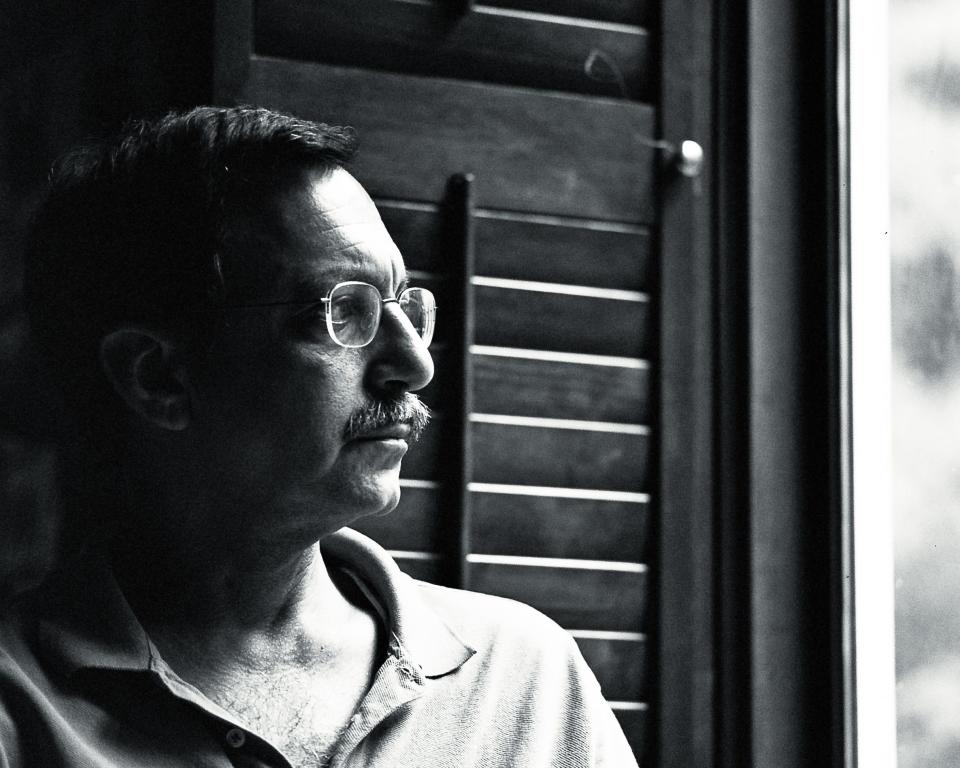Visiting Our Past: A mystery grave and a mountain musician
In June 1864, Dr. V.N. Seawell, a prominent Moore County physician traveling by stagecoach to Asheville, saw 22 Junior Reserve soldiers, in charge of 48 battle-scarred prisoners, stop at a spring in what is now Ridgecrest to break for lunch.
The prisoners were headed to the Morganton depot, and from there, by train, to Richmond, most likely to be returned to duty by the Army of Northern Virginia.
"While descending the eastern slope," Seawell reported in a 1914 letter to a Winston-Salem newspaper, each prisoner, at a given signal, "grabbed the gun of his guard," and executed an escape during the ensuing melee.
The young guards managed to shoot and kill two fugitives. One of them, named Carver, according to memory, was buried there in a woodland grave, the markers of which survive today, providing a memorial visited by participants in a Swannanoa Valley Museum hike.
Local historian Terrell Garren, investigating the mystery of who's really buried in that spot, has discovered that it had been solved a century ago by local newspaper writers.
Garren had already determined from troop records that a Henderson County soldier named John Carver had served in Company G, 1st NC Cavalry, under Maj. General J.E.B. Stuart, and survived many battles and wounds. On Nov. 30, 1863, Carver had been sent home on detached service. His record indicates that he was killed while "under arrest" sometime after April 10, 1864.
Subsequent to that research, Garren found in Pack Memorial Library's N.C. Collection a Sept. 21 1914 letter by Thomas J. Rickman, responding to Dr. Seawell and writing "at the request of Capt. W.P. Lane (former commander of the cited Junior Reserve unit), C.M Pace (also a member of that company, later a Superior Court judge), and others."
Public history
William Preston Lane was the 17-year-old commander of the Junior Reserves company at the prisoner escape and was as green as the corn left growing in his field when the call had come for his age group in April 1864.
"John Carver," Lane told Hickman, "was the name of the prisoner who was first mutinied; and he, Carver, killed one of his (Lane's) guards by the name of Bledsoe; and that, following this, Lt. Culberson killed Carver."
More followup: No Bledsoe from this area appears listed in the Junior Reserves in N.C. Troops. There was a young Bledsoe from Wake County, who apparently survived the war. A mystery remains about that legend.
Lane went on to command his Junior Reserves at the Battle of Wyse Fork, near Kinston, sending his men against Union Maj. General Jacob Cox's front in order to give Confederate Gen. Robert Hoke time to maneuver. It was a suicide mission against heavy artillery. Lane was shot through the chest, and survived.
Finally, the answer to "Who's buried in the grave by the tunnel?" is: no one. Friends and family moved Carver's remains from that grave to the McCarson Cemetery in Henderson County shortly after the war; and the family erected a memorial stone for their ancestor at Mill Pond Cemetery, near West Henderson High School, on Highway 191.
Who led the way for women in country music?
After young Pete Seeger attended the Mountain Dance and Folk Festival in Asheville in 1936, he ditched two things: Harvard and his banjo.
He ditched Harvard for a folk-singing career; and he ditched his four-string banjo for a five-string one after watching a performance on such an instrument by a "bespectacled woman in a rocking chair," as Robert Ferguson describes Samantha Biddix Bumgarner in his essay in "North Carolina Women," a book from the University of Georgia Press.
"Aunt Samantha," as the industry dubbed Bumgarner, left Jackson County in 1924, when she was in her 40s, to go to New York for a session with the Columbia Phonograph Company. She thus became, Ferguson points out, "the first female string-band musician to make a recording for a major music label."
"Little is known about Bumgarner's personal life, especially her early years," Ferguson states. In fact, saying she was in her 40s in 1924 covers the gamut of guesses about her genesis.
Her death certificate says she was born in 1878, but Bumgarner had told various census takers she was born in 1881 or 1884.
One glimpse we have of little Samantha is of her longingly eyeing her father's fiddle, which she witnessed he could make "croon like a loving woman." Her father, Haselton Biddix, forbade his daughter from playing the instrument, for it was associated with carousing; but she sneaked it down from its niche and taught herself to play it when he was away, and he eventually relented to her destiny.
He bought her a banjo and took her on tour with him.
After marrying "Carse" Bumgarner, she continued to play, taking advantage of the proliferation of music events in the area. She won a contest in Sylva, even though she played a 10-cent banjo (her good one had burned in a house fire), and, she said, "I was so nervous I didn't know I was hitting the strings."
Part of Bumgarner's greatness, Ferguson shows, was her relative anonymity.
In 1910, when she was a frequent traveler to festivals, "she listed her occupation as a dressmaker and worked from the confines of the home she shared with her husband."
By 1920, Carse was the foreman at the pulpwood paper plant in Sylva, and after his death, Samantha was "able to make a modest living from her public performances."
Modesty was her trail-blazing advance guard. In the competitive, booming music industry, she was cherished as a kind of grandma.

Rob Neufeld wrote the weekly "Visiting Our Past" column for the Citizen Times until his death in 2019. This column originally was published Feb. 24, 2014.
This article originally appeared on Asheville Citizen Times: Visiting Our Past: A mystery grave and a mountain musician

